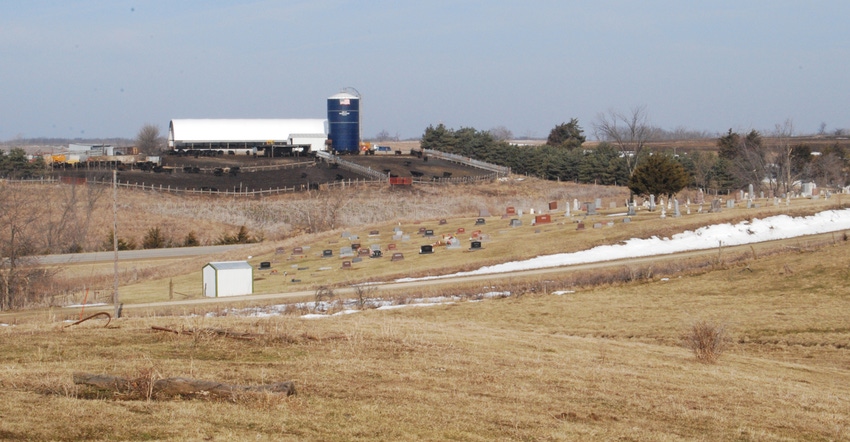December 28, 2018

The Agricultural Improvement Act of 2018, referred to as the 2018 Farm Bill, cleared Congress in mid-December and was signed by President Donald Trump.
The final bill stems from the work of a conference committee convened to reconcile differences between Senate and House versions passed earlier this year. The final bill is a compromise, prompted by the need to implement programs to assist farmers struggling with market and price uncertainties.
Generally, the bill veers little from the status quo. The conference committee eliminated provisions that would not gain bipartisan support, including stricter work requirements for SNAP recipients. The Senate passed the final bill by a margin of 87 to 13 on Dec. 11; the House followed suit Dec. 12 by a margin of 286 to 47. More than 75% of the $867 billion price tag over a 10-year period funds the Supplemental Nutrition Assistance Program (SNAP). The following is a summary of key agricultural provisions from the 807-page bill.
Commodity programs revamped
The bill reauthorizes Price Loss Coverage (PLC), Agriculture Risk Coverage County (ARC-CO), and Agriculture Risk Coverage Individual (ARC-I). Producers must make a new five-year election (2019-23) to obtain PLC or ARC-CO on a commodity-by-commodity basis or ARC-I for all commodities.
If no unanimous election is made, coverage is waived for the 2019 crop year, and producers are deemed to have elected the same coverage for each covered commodity on the farm for the 2020 through 2023 crop years as they did for the 2015 through 2018 crop years.
Base acres. If all cropland on a farm was planted to grass or pasture from 2009 through 2017, base acres will continue, but PLC or ARC payments will not be made. These farms may participate in a five-year grassland incentive contract under the Conservation Stewardship Program (CSP), with a payment rate of $18 per acre.
Elections. The bill allows producers to change program elections to PLC or ARC each year, beginning with crop year 2021. This is a discretionary option. Producers who do not opt for a change will not be required to reaffirm previous elections.
PLC. The PLC program is reauthorized to assist producers when the market price for a covered commodity falls below a statutory reference price. The bill sets the PLC payment rate as the difference between the “effective reference price” (a new term) and the effective price. This allows for potential increases in reference prices as market conditions improve. The “effective reference price” is the lesser of:
• 115% of the reference price or
• greater of 85% of the Olympic average of the five most recent marketing year average crop prices or the reference price
The reference price is $3.70 for corn and $8.40 for soybeans. The maximum effective reference price for these commodities is $4.26 and $9.66, respectively. Within 30 days after the end of each applicable 12-month marketing year for each covered commodity, the secretary of agriculture must publish the payment rate.
ARC. Both the ARC-CO and ARC-I programs are reauthorized to provide payments to producers when actual crop revenue falls below 86% of benchmark revenue. Payments under ARC programs would be based on the payment rate of the county where the base acres are physically located. The transitional yield plug would increase to 80% from 70%. The yield would be trend-adjusted, and the “effective reference price” would be used to calculate the benchmark revenue or guarantee.
When a farm has a tract with base acres that cross a county boundary, the Farm Service Agency will prorate the base acres based on the quality of cropland of the tract in each county. ARC-CO payments will be calculated on that basis. The bill requires USDA to publish the payment rate for each county no later than 30 days after the end of each 12-month marketing year for each covered commodity.
Dairy program strengthened
Largely due to the severe economic downturn impacting the dairy industry, more significant changes were made to the dairy program. The bill replaces the name “Margin Protection Program” (MPP) with “Dairy Margin Coverage” (DMC).
Because Congress recognized that the prior MPP did little to help dairy producers, this new farm bill allows producers to use 75% of net premiums paid for the MPP from 2014 to 2017 as a credit for future DMC premiums. Producers can alternatively choose to receive 50% of the net premium as a direct refund.
Participating dairy operations would be paid when actual dairy production margins are less than threshold levels for the dairy risk coverage payment. DMC would add margin coverage levels of $8.50 per cwt, $9 per cwt and $9.50 per cwt for the first 5 million pounds of covered milk production. Premium rates would thus range from $4 to $9.50 per cwt for Tier I, and from $4 to $8 per cwt for Tier II.
Producers with covered production greater than 5 million pounds could enroll in coverage levels of $8.50, $9 and $9.50 per cwt under Tier I, and make a separate coverage election under Tier II.
The bill would also allow producers to expand their range of production to be covered, from 5% up to 95% of production history. Premiums for $5 coverage in Tier II are generally reduced by 88% to make catastrophic coverage more affordable.
Producers who lock in a five-year coverage level and coverage percentage will receive a 25% reduction in premium rates.
Loan provisions. The bill increases the loan rates for many commodities pledged via a marketing loan to more accurately reflect market prices. The loan rate for corn, for example, increases from $1.95 to $2.20 per bushel, and for soybeans from $5 to $6.20 per bushel.
The bill also authorizes FSA to increase guaranteed loan limits from $1.4 million to $1.7 million; direct operating loans from $300,000 to $400,000; and direct farm ownership loans to $600,000.
Payment limits. The bill retains the current payment limit of $125,000 per person or entity for all ARC or PLC payments. It also continues to limit participation to those persons or entities with less than $900,000 of adjusted gross income. Loan deficiency payments and marketing loan gains do not count toward the payment limit. Corporations and limited liability companies remain subject to these limits.
Actively engaged in farming. To be eligible for farm program payments, participants must continue to meet requirements concerning “active participation” in the farming activity. Beginning in 2014, limits were placed on the number of nonfamily members that could qualify as farm managers for payment purposes. No such limits apply for qualifying family members.
The bill expands the definition of family members to whom these exceptions apply. It now includes first cousins, nieces and nephews. The bill does not include proposed provisions to restrict the number of nonfarming managers to one and to impose a 500-hour-per-year requirement to qualify for active engagement.
Conservation provisions updated
CRP. The bill increases Conservation Reserve Program enrollment from 24 million to 27 million acres by 2023. This includes 8.6 million acres devoted to continuous practices and 2 million acres devoted to grasslands. Contract lengths will be between 10 and 15 years, after which most land will be eligible for re-enrollment. Payments for general and continuous enrollment contracts are limited to 85% and 90%, respectively, of the county average rental rates. USDA is directed to use average rental rates reflecting local rental rates. These provisions were put in place to prevent competition with local farmland rental markets.
EQIP. The bill continues the Environmental Quality Incentives Program for working lands and increases funding to $2.025 billion through 2023. The bill authorizes conservation innovation grants, conservation innovation trials, and soil health pilot projects.
CSP. The bill continues the Conservation Stewardship Program for working lands but reduces funding from $1.8 billion to no more than $1 billion per year. Current contracts will be honored, with one-year extension options allowed for contracts expiring in 2019.
ACEP. The bill restores funding for the Agricultural Conservation Easement Program to $450 million per year.
Crop insurance continued
The bill retains the existing structure for the crop insurance program. Beginning farms can now receive a discount for their whole farm revenue protection premiums for 10 years instead of five. The bill also makes industrial hemp eligible for crop insurance and directs the FCIC to develop policies regarding this change.
Other provisions. The bill legalizes production of hemp as an ag commodity and removes it from the list of controlled substances. The bill provides for many other programs, including re-establishing a farm and ranch stress assistance network, combatting rural health emergencies, reserving funds to tackle the opioid crisis, working to extend access to rural broadband networks, promoting community economic development programs, and improving the National Organic Program and National Organic Standards Board.
Tidgren is an attorney and director of the Center for Ag Law and Taxation at ISU. Contact her at [email protected].
About the Author(s)
You May Also Like






